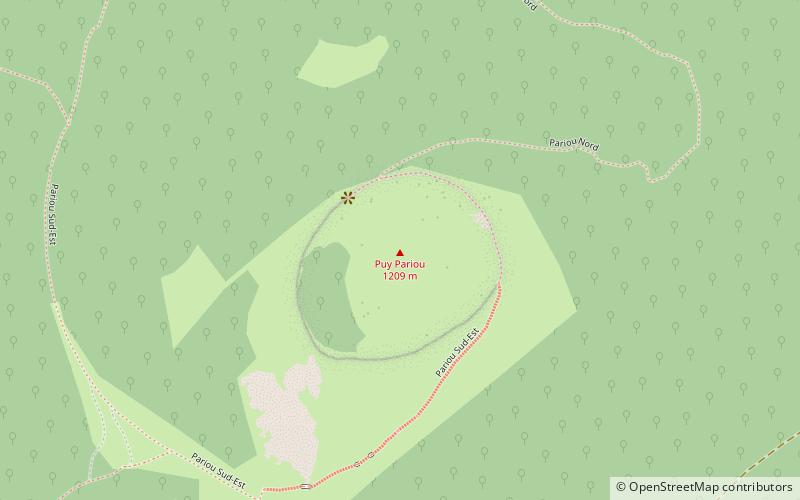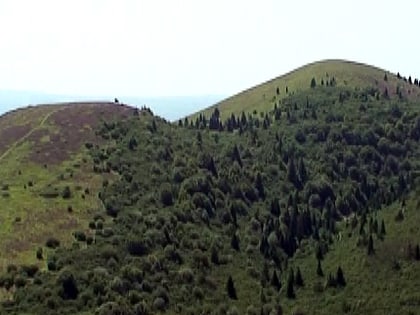Puy Pariou


Facts and practical information
Nestled in the heart of France's Auvergne region, Puy Pariou is a natural marvel that beckons to both geologists and adventurers alike. As a classic cinder cone volcano, it is part of the Chaîne des Puys, a north-south oriented chain of volcanoes that has become a prominent feature of the Massif Central. Puy Pariou, with its well-defined crater and lush green slopes, stands as a testament to the volcanic history that has shaped this landscape.
Standing at 1,209 meters, Puy Pariou may not be the tallest peak in the region, but its perfectly symmetrical cone and crater are iconic. The volcano's last eruption is estimated to have occurred around 6,000 years ago, and today it is dormant, offering a safe and scenic destination for hikers and nature enthusiasts. The crater, with a depth of about 80 meters, provides a unique geological site that allows visitors a glimpse into the earth's fiery past.
The hike to the summit of Puy Pariou is a popular activity, offering panoramic views of the surrounding landscape, including the highest peak in the Chaîne des Puys, the Puy de Dôme. The path to the top is well-maintained, making it accessible to a wide range of fitness levels. Once at the summit, the breathtaking vistas of the Auvergne countryside and other volcanic peaks provide a memorable experience and an excellent opportunity for photography.
Puy Pariou is not just a favorite spot for tourists; it is also of significant scientific interest. The volcano and its surroundings are part of the Auvergne Volcanoes Regional Nature Park, an area dedicated to the preservation of the natural environment and the promotion of sustainable tourism. In addition, the Chaîne des Puys, including Puy Pariou, was inscribed on the UNESCO World Heritage List in 2018, recognizing the area's geological value and its illustration of continental break-up processes.
Auvergne-Rhône-Alpes
Puy Pariou – popular in the area (distance from the attraction)
Nearby attractions include: Puy des Goules, Grand Sarcouy, Le Grand Suchet, Le Petit Suchet.




